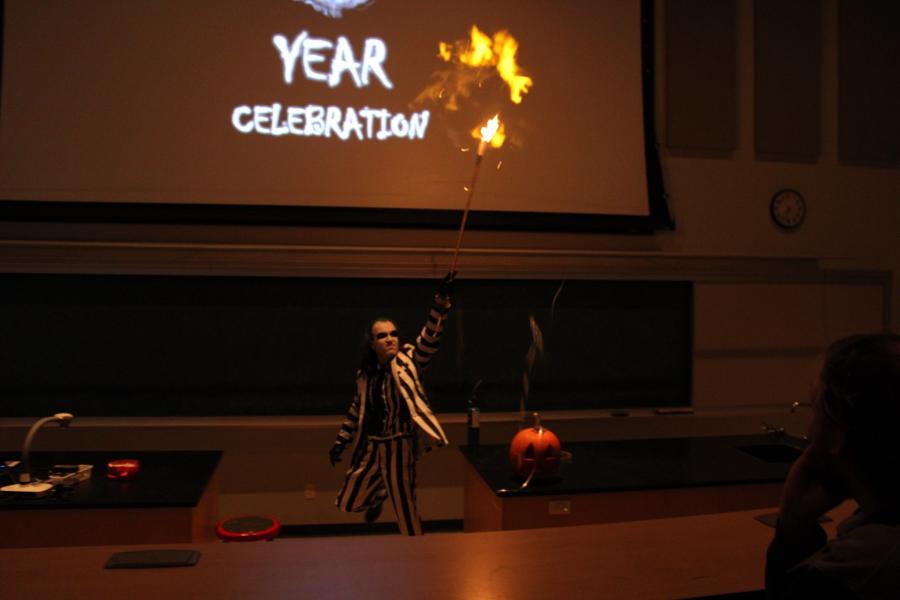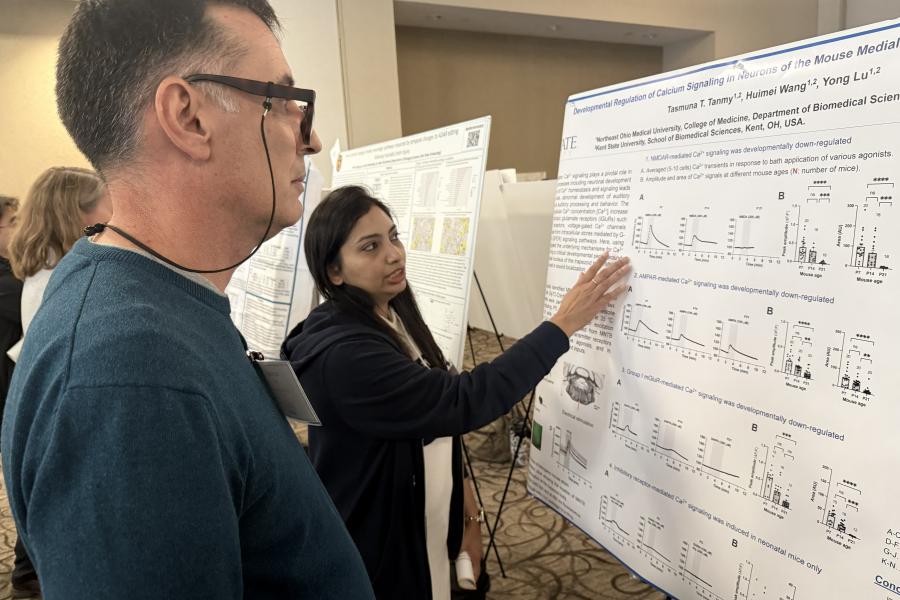News
Three Minute Thesis competitions, like the one that took place recently at Kent State, are held at institutions nationwide and help student researchers practice presenting complicated research data briefly and simply, in a way that's easy for non-academics.
Student groups and classes celebrated Halloween in creative ways as unique as their majors.
The fifth annual Chem-O-Ween, presented by Kent State's Department of Chemistry and Biochemistry was its biggest and most exciting to date. It featured Halloween-themed activities, contests and four different themed rooms hosting fun and fascinating scientific demonstrations.
Kent State University's Brain Health Research Institute recently held its annual Neuroscience Symposium 2025, Conference and Research Exchange. The two-day event, which took place at the Kent State University Hotel & Conference Center, highlighted the research of Kent State faculty and students.
This year’s speaker for Kent State University’s Bowman Breakfast was the embodiment of the symbiotic relationship between the university and the city of Kent that is celebrated at the annual event.






